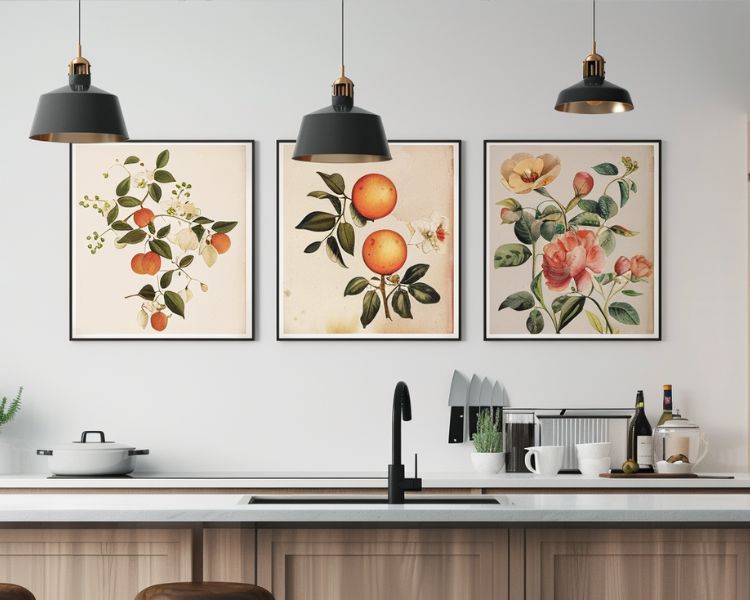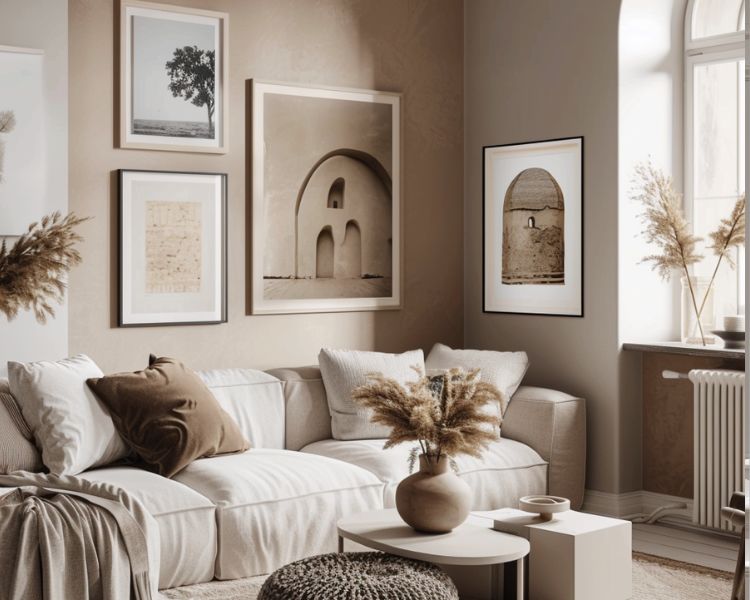How to Light Up Wall Art: Expert Tips for Perfect Display & Framing!
Lighting can make or break the visual impact of artwork. Whether it's a masterpiece from a renowned artist or a cherished family photograph, proper lighting ensures that the colors pop, the details stand out, and the whole piece is viewed as the artist intended.
Poor lighting, on the other hand, can wash out colors, create shadows, and detract from the overall effect of the artwork. Thus, the way you light up wall art is a critical aspect of its presentation and enjoyment.
While aiming for the perfect lighting for your art, it's easy to run into common pitfalls. Here are some:
- Glare: Too much light can produce a harsh glare, obscuring details.
- Uneven Lighting: Some parts of the artwork may be well-lit while others stay in shadow.
- Fading: Certain types of light can cause the colors in your artwork to fade over time.
Types of Lighting for Art
Ceiling-Mounted Accent Lights
One of the most traditional and effective ways to light up wall art is using ceiling-mounted accent lights. These lights can be adjusted to shine directly on the artwork, drawing attention and adding depth. Ceiling-mounted lights offer targeted lighting, making them ideal for large rooms or galleries where multiple pieces of art are displayed. For the best results, angle the lights at about 30 degrees to reduce glare (Gallery System).
Track Lights
Track lighting is a versatile option for lighting artwork. It's easy to install and offers adjustable light fixtures that can be angled in different directions, making it perfect for individuals who frequently change their wall art. They are designed to draw attention to the artwork and fit well with any interior decor, providing a high Color Rendering Index (CRI) that enhances the vibrancy and details of the artwork (Perfect Picture Lights).

Wall Washers
Wall washers provide an even distribution of light across a large surface area, making them ideal for large paintings or photo walls. They help in creating a smooth, gallery-like feel to your art display, eliminating harsh shadows and providing uniform illumination over the artwork.
Picture Lights
Picture lights are small, individual lights designed to illuminate single pieces of art. They are typically attached to the frame or mounted on the wall above the artwork, offering a dedicated lighting solution for each piece. They are particularly useful for highlighting intricate details in smaller artworks.
Framing and Conservation
Framing Considerations
The way your artwork is framed can make a significant impact on how it interacts with light. Frame materials like non-reflective glass can help in reducing glare, making the artwork more visually appealing under various lighting conditions.

Your frame should complement both your artwork and the room's decor. Keep in mind that darker frames might require more light to bring out the details in your artwork.
Conservation of Artwork
While lighting can enhance the appearance of your artwork, the wrong type of light can have damaging long-term effects. It's crucial to choose lights that not only enhance but also protect your artwork. LED or low-UV emitting lights are recommended for better conservation as they cause less fading and deterioration over time.
Natural Light: Direct sunlight can lead to fading and is generally not recommended for artwork conservation. Limit the exposure of artwork to natural light and use UV-filtering glass to minimize damage.
By taking into account considerations for lighting, framing, and conservation, you can ensure that your artwork is not just well-displayed, but also well-preserved. Keep in mind that the right lighting can transform a piece of art, elevating it from good to extraordinary. And as always, consult experts to tailor the lighting conditions to the specific needs of your artwork.
Frequently Asked Questions
What are the best light fixtures for highlighting wall art?
Ceiling-mounted accent lights and track lights are often recommended for their versatility and ability to focus on specific pieces. Wall washers are excellent for larger installations, while picture lights offer a more traditional look.
How do different frame materials impact the lighting of artwork?
Frame surface considerations are crucial when thinking about how to illuminate art. Materials like non-reflective glass can minimize glare, making the artwork more visually appealing under various types of lighting.
How can I conserve my artwork while keeping it well-lit?
Choose LED or low-UV emitting lights to both enhance and protect your art. Conservation of your artwork is an essential factor when deciding on the type of light to use.
Are there any risks with using natural light to illuminate my artwork?
Exposure to direct sunlight can cause fading and deterioration over time. For better artwork preservation, it's advisable to limit its exposure to natural light and use UV-filtering glass if possible.
Can the color scheme of a room affect how artwork should be lit?
Absolutely, the room's color scheme can impact how artwork should be lit. Darker rooms might require more intense lighting solutions, while lighter rooms may benefit from softer, more diffuse lighting.






